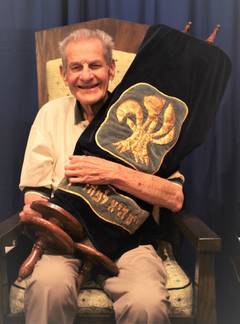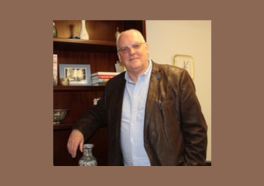- About Us
- Connect
- Learn
- Jewish Life
- Music
- Events
- Give
- Join Us
Two Photographs: Yom Kippur 5781 - 9/28/20
09/29/2020 05:52:48 PM
| Author | |
| Date Added | |
| Automatically create summary | |
| Summary |
Last year I visited the Equal Justice Initiative’s Legacy Museum in Montgomery, Alabama. In a large black-and-white photograph, a group of white men and boys crowd together. They wear suspenders and ties reflecting the fashion of a century ago. Some faces are grim and sober, others with smiles, one with a smirk.
Above them dangle two slim black legs in ragged pants. The legs belong to sixteen-year-old Lige Daniels, lynched from an oak tree in Center, Texas in the year 1920.
The smallest boy in the photograph is wearing overalls and leaning slightly back as if trying to hide behind the man next to him. A taller boy is laughing beside the little boy. But the little boy’s eyes are wide and haunted. The display reads: “Nine million black people were terrorized by the threat of lynching violence.”
Nine million people terrorized. And the haunted eyes of this child. This child did not drag the teenager Lige Daniels from his cell. He did not place the noose around Lige’s neck. He is too small to have brought himself to the lynching. He is not responsible for this act of racial terror, but he was a witness to it.
In the years that followed, did the small boy continue to be haunted by what he saw? Did the image of the teenage boy hanging above his head invade his dreams? Or did the passage of time blur the terror into a scene barely remembered?
Earlier this summer many of us saw another photograph on social media or in the papers. It is the image of a white police officer kneeling on the neck of George Floyd. Some of us watched the video and heard George Floyd repeating that he couldn’t breathe as the small crowd of witnesses pleaded with the officer to stop. The officer stared directly into the camera. Unlike the little boy in the photograph at the lynching, the officer’s eyes are not haunted. They are hardened, defiant.
This video changed our country. It woke us up to the fact that the civil rights movement and the election of a black president has not solved the crisis of racism. We are still haunted by a legacy of violence.
This morning we read the Torah’s story of Cain murdering his brother Abel. After God punishes the murderer Cain, Cain says that his “sin is too great for him to bear.” The meaning of the word for sin, avon, encompasses both the sin and the effects of the sin.
The effects of what has been called “America’s original sin,” the enslavement, exploitation and murder of Africans brought by force to these shores, remain with us still: vast racial disparities in employment, education, home ownership, health care, and in the criminal justice system. Millions of our fellow Americans feel as if they live “with a target on their backs.”
If we as a nation do nothing to remove this sin, what will we become? Will our eyes be haunted, or will they be hardened?
On Yom Kippur afternoon it is traditional to read the story of the prophet Jonah, who is sent to the wicked city of Ninevah to proclaim its destruction. When Jonah arrives in Ninevah, he declares that in forty days the city would be destroyed.
News of Jonah’s words reaches the king, and the king orders his people to repent – to do teshuvah. The king says, “Let them turn, everyone, from their evil way and from the violence that is in their hands.” The rabbis of Talmud (Taanit 16a) ask: What is the meaning of “the violence that is in their hands?” …. They answer: Even if one stole a beam and built it into a palace, he must tear down the entire building and return the beam to its owner.
When slave traders brought the first enslaved people to our shores 400 year ago, this represented the first stolen beam. Since then, our nation has built an elaborate palace with the stolen labor and the stolen lives of people enslaved from Africa and their descendants, those who were born into slavery. We have built our prosperity as a nation on the foundation of this theft.
Must we tear down our nation in order to return the stolen beam? Must we dismantle our institutions and our economy in order to right this wrong? According to Rabbi Hillel, we do not. Hillel said that in the case of a person who stole a beam and built it into a palace, the person needs to repay only the value of the beam. Hillel’s reasoning is that to require the destruction of the entire palace would mean that people would be less likely to do teshuvah – to repent – to return to the right path. Recognizing that the beam has been stolen and that its value must be accounted for is the work of teshuvah, of return to the path of justice.
Despite its focus on teshuvah, Yom Kippur itself cannot cleanse us of sins committed against our fellow human beings (Yoma 8:9). The harm done to others can be mitigated only when we confess the wrongdoing, when we seek forgiveness from those wronged, and when we make restitution for the damage done.
We have only begun our national atonement for the sin of slavery. While it has been heartening to see more white Americans opening their eyes to the reality of racism and joining with our black and brown brothers and sisters in peaceful protest, this is only the beginning. White Americans are clearly not unified. The protests have been met with conflict and violence. Confronting racism is one of many issues that continue to divide us from each other.
We Jews can play an important role in moving our nation closer to teshuvah. Just eighty years ago, Nazi Germany enslaved and murdered millions of Jewish people. Germany went through its own acknowledgement of the great sins committed by the Nazi regime. Germany paid reparations to individuals –and to the nation of Israel – for the crimes committed by the Nazis. Today Germany and the State of Israel are firm allies.
Our own Jewish community is part of this national conversation about redressing the wrongdoing of slavery. Temple Israel is a part of the Union for Reform Judaism, and the URJ is on record in support of federal legislation that would establish a commission to study and develop reparations proposals for African Americans in our country. This is another important step on the path to our nation’s teshuvah.
Yet it is not enough to rest content that others will have these hard conversations on our behalf. Each of us needs to educate ourselves about the sordid legacy of slavery in the past, and the realities of racism in the present. And we need to be willing to engage in difficult and respectful conversations with others who do not share the same perspectives, whether they be in our community, our circle of friends, or even in our family. If we each commit to having these difficult conversations, we can make a difference.
We were not present at the lynching of the teenage boy, Lige Daniels, in Texas. We were not present at the murder of George Floyd. But we have seen the photographs and we must respond. We need to have these difficult conversations, one at a time, in order to bring this country closer to teshuvah.
Until that day, let our eyes be haunted by what we have seen. Let our eyes remain haunted, lest they become hardened.
Thu, April 24 2025
26 Nisan 5785
Temple israel Happenings
-
Thursday ,
AprApril 24 , 2025 County-Wide Yom HaShoah Commemoration
County-Wide Yom HaShoah Commemoration
Thursday, Apr 24th 12:00pm to 1:00pm
County-Wide Yom HaShoah Commemoration at the Garden of Remembrance, 119 Martine Avenue in White Plains. Temple Israel's rescued Holocaust Torah scroll will be part of the procession of scrolls from Westchester county, and Cantor Hayley Kobilinsky will participate in the program. -
Tuesday ,
AprApril 29 , 2025 Sisterhood Book Group
Sisterhood Book Group
Tuesday, Apr 29th 6:00pm to 8:30pm
NEW DATE! We will be discussing the book "The Frederick Sisters Are Living the Dream" by Jeannie Zusy in person at a congregants' home. The author will be joining us for the discussion. We will have a Pot Luck Dinner to start -
Wednesday ,
AprApril 30 , 2025 Holocaust Education Today: Challenges and Limits by Dr. Werner Steger
Holocaust Education Today: Challenges and Limits by Dr. Werner Steger
Wednesday, Apr 30th 6:00pm to 7:30pm
Dr. Steger serves as the endowed chair for the Greenspan-Handel Trust for Holocaust and Genocide Studies. -
Saturday ,
MayMay 3 , 2025 Midnight Run
Midnight Run
Shabbat, May 3rd 1:00pm to 4:00pm
Volunteers needed. The Midnight Run is a volunteer organization whose goal is to come together as a community in order to feed the homeless of New York City. They coordinate more than 1,000 relief missions per year with volunteers from churches, synagogues, schools and other civic groups to deliver food, clothing, blankets and personal care items to the homeless poor on the streets of New York City.
Events
Today's Calendar
| Yom HaShoah |
: 12:00pm |
: 7:00pm |
Friday Night
: 7:00pm |
Shabbat Day
: 9:30am |
Upcoming Programs & Events
Apr 24 |
Apr 24 |
Apr 29 |
Apr 30 |
May 2 |
This week's Torah portion is Parashat Sh'mini
| Shabbat, Apr 26 |
Yom HaShoah
| Thursday, Apr 24 |




